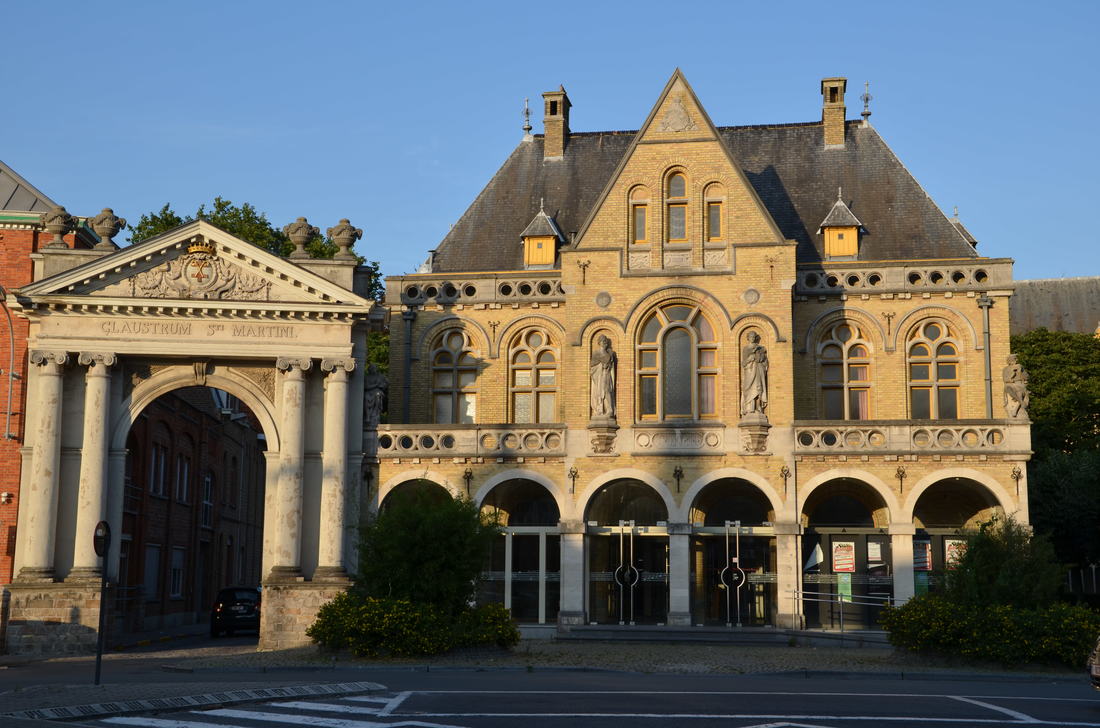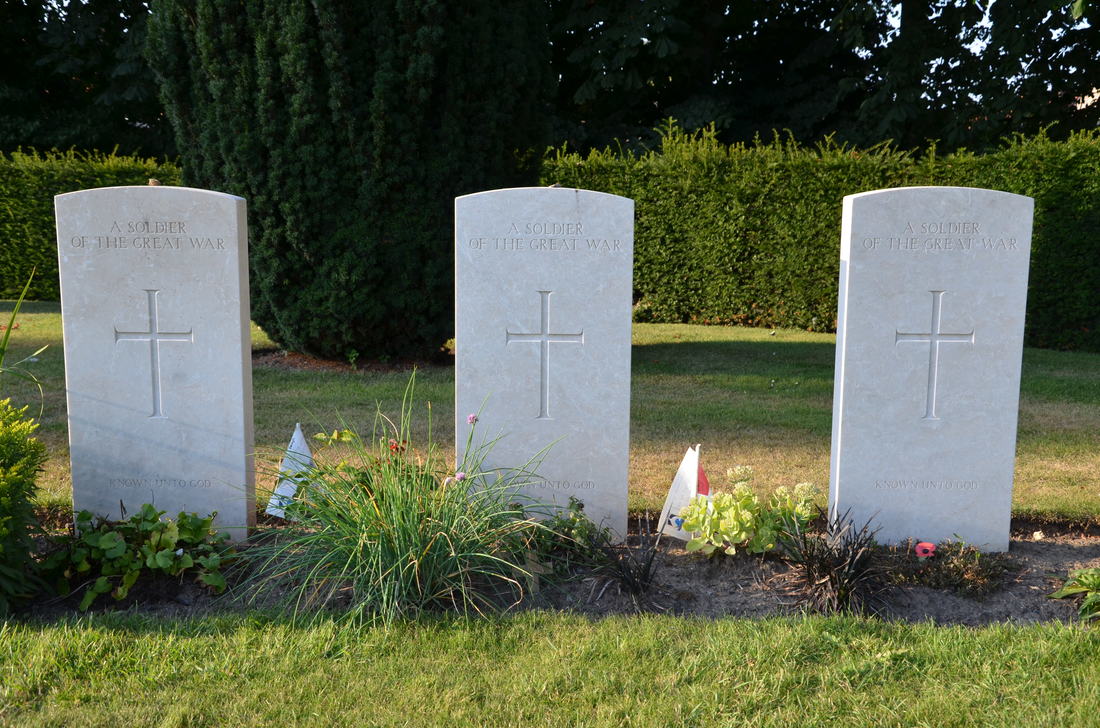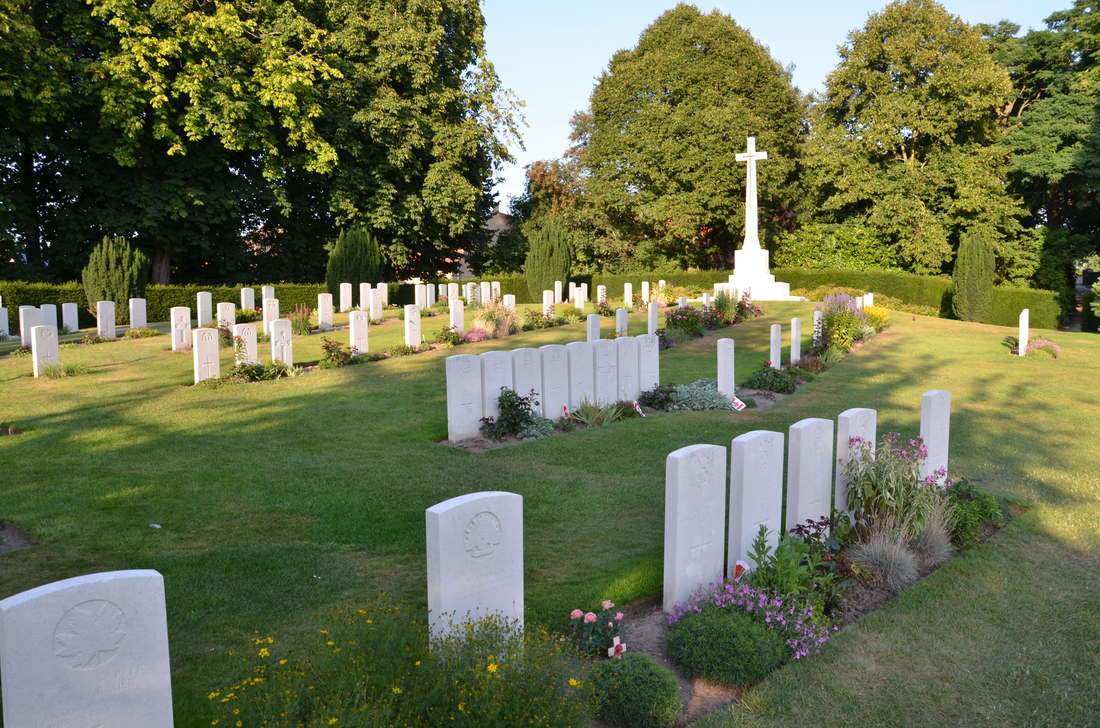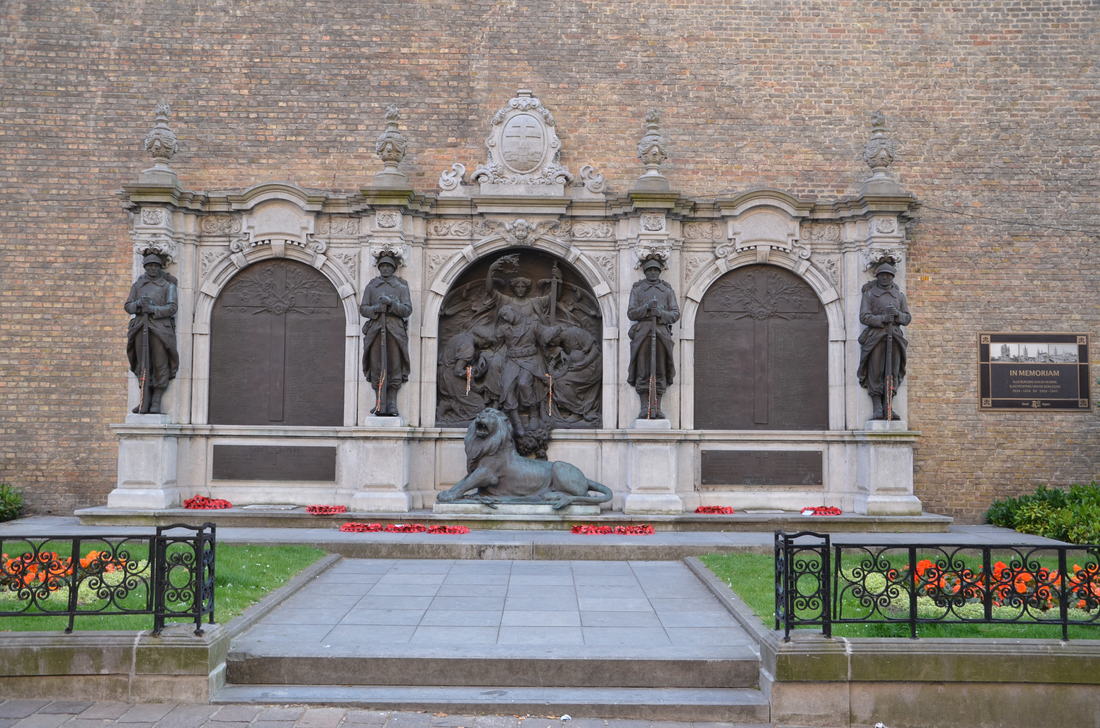Miasto, które po hekatombie I Wojny Światowej podniosło się z kolan. Niemal całkowicie zrównane z ziemią, po około 20 latach żmudnej odbudowy, odzyskało dawny blask. Wierna odbudowa miasta wcale nie była taka oczywista. W tej sprawie spierali się zwolennicy dwóch koncepcji. Drugą była budowa całkiem nowego miasta. Na szczęście koncepcja odbudowy historycznej zwyciężyła. W 1928 roku rozpoczęto odbudowę sukiennic. Pracą dowodził architekt Jules Coomans. W 1934 roku zrekonstruowano skrzydło zachodnie i wieżę sukiennic. Jules Coomans zmarł w 1937 roku, przed końcem odbudowy zachodniego skrzydła. Kontynuację jego pracy prowadził architekt P.A. Pawuwels.
Today Ieper is a small town in western Belgium. It bears the name of the City of Peace and maintains close relations with the Japanese Hiroshima, which was also tragically experienced by the war. Ieper is also the site important for thousands of world war enthusiasts who visit the cementeries where buried of hundreds of thousands of soldiers killed in bloody battles for Ieper. In the vicinity of the city they can visit about 156 cemeteries, which are proof of the horrors of war.
This city is also an example of the incredible spirit of the inhabitants who restored its historical appearance to the next generations. The hecatomb of Ypres during the First World War is also reminiscent monument of victims of the First World War near the Cloth Hall and above all the monumental Menina Gate Memorial. A statue in honor of the British and the British commonwealth soldiers. On the walls of this monument engraved the names 54.389 of officers and soldiers whose graves were never found.
|
TO THE ARMIES
OF THE BRITISH EMPIRE WHO STOOD HERE FROM 1914 TO 1918 AND TO THOSE OF THEIR DEAD WHO HAVE NO KNOWN GRAVE |
AD MAJOREM DEI GLORIAM
HERE ARE RECORDED NAMES OF OFFICERS AND MEN WHO FELL IN YPRES SALIENT BUT TO WHOM THE FORTUNE OF WAR DENIED THE KNOWN AND HONOURED BURIAL GIVEN TO THEIR COMRADES IN DEATH |











